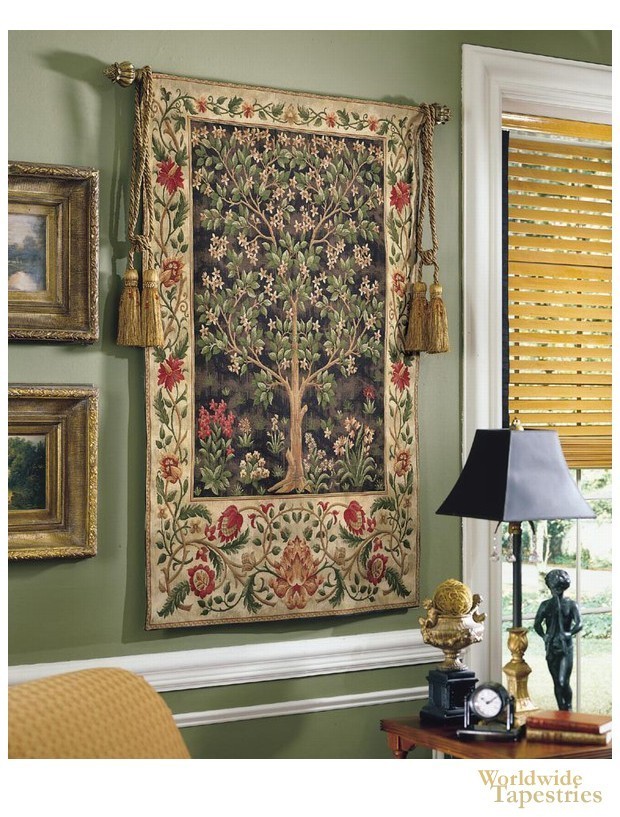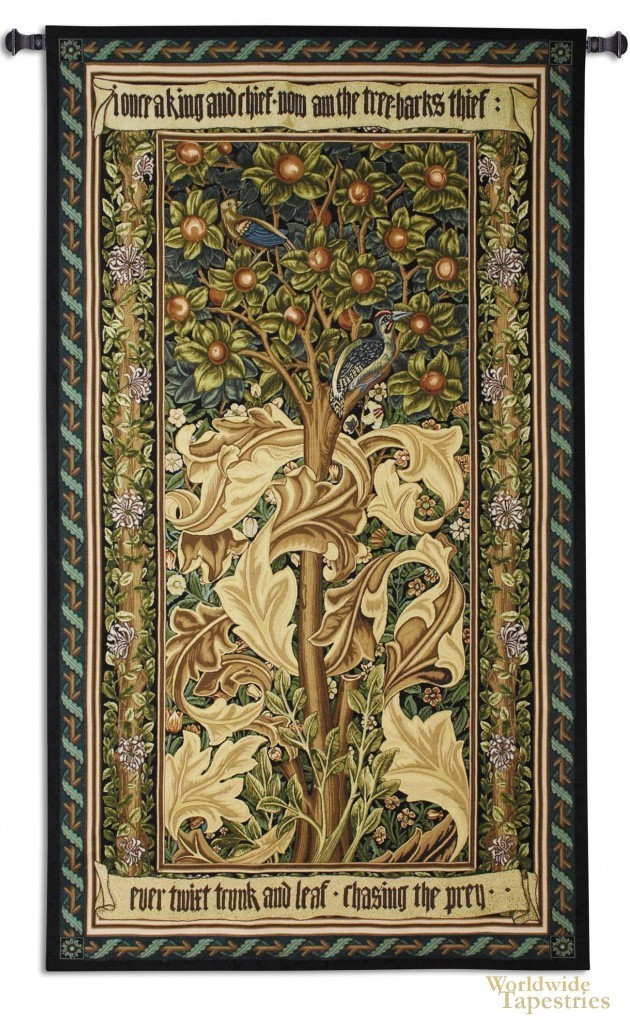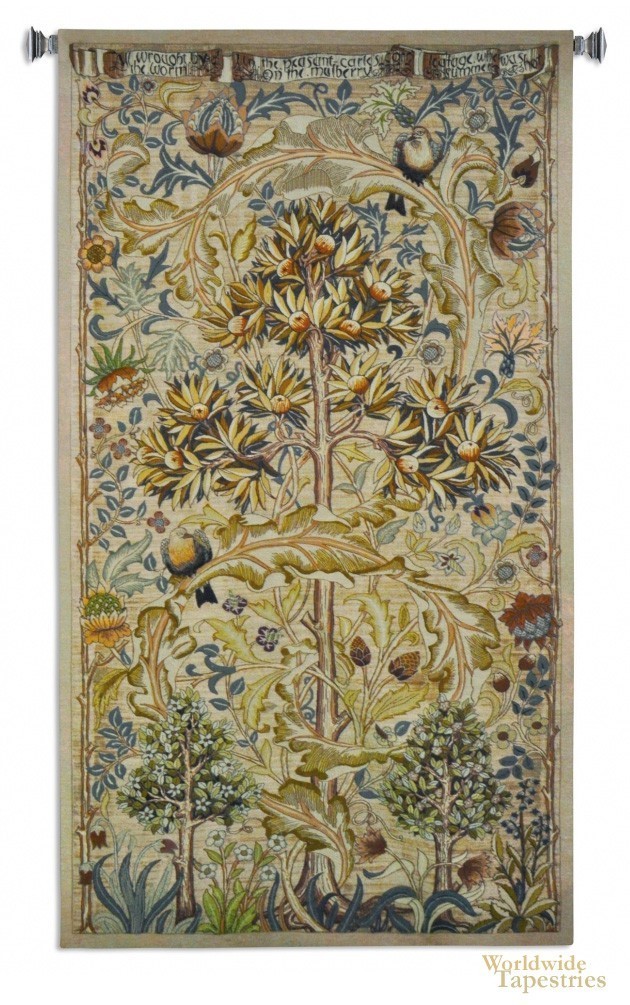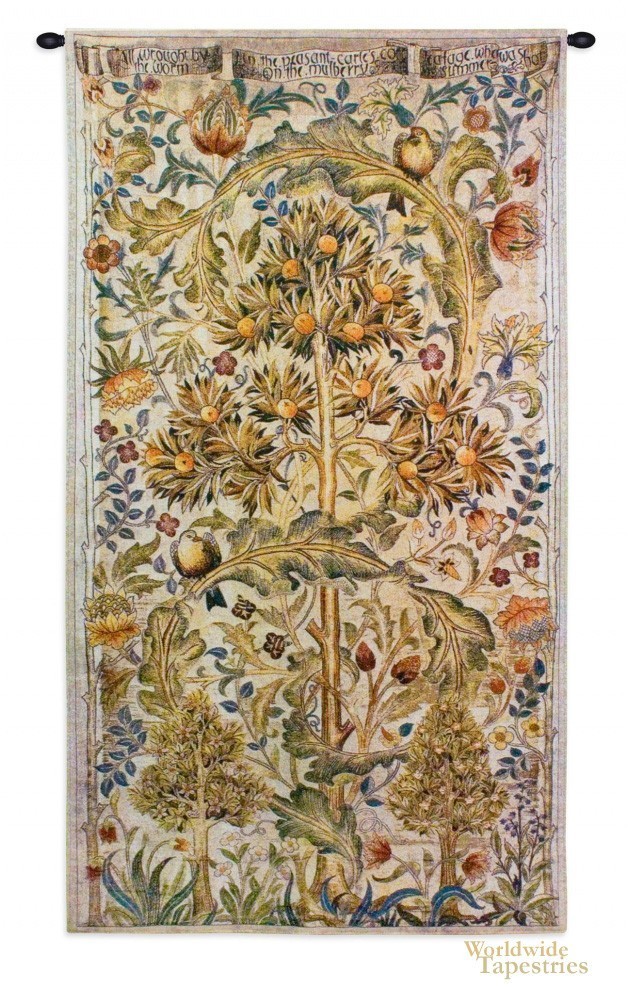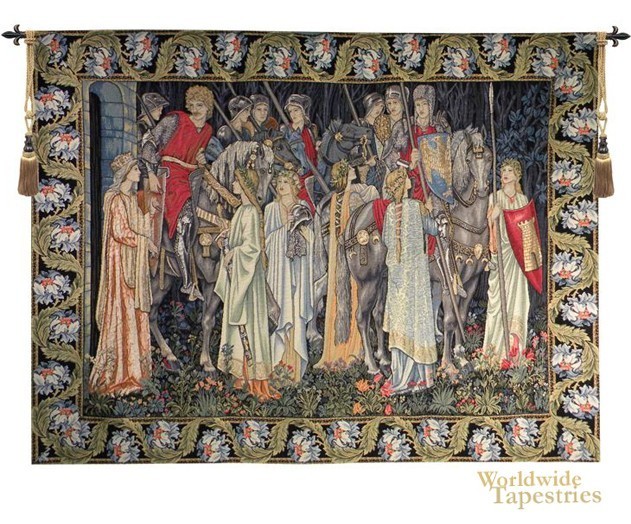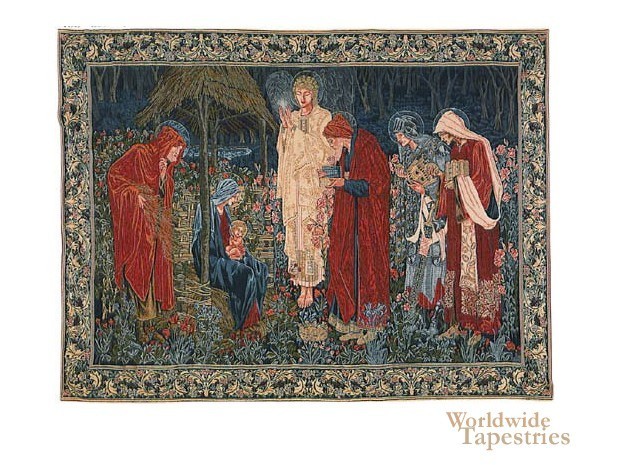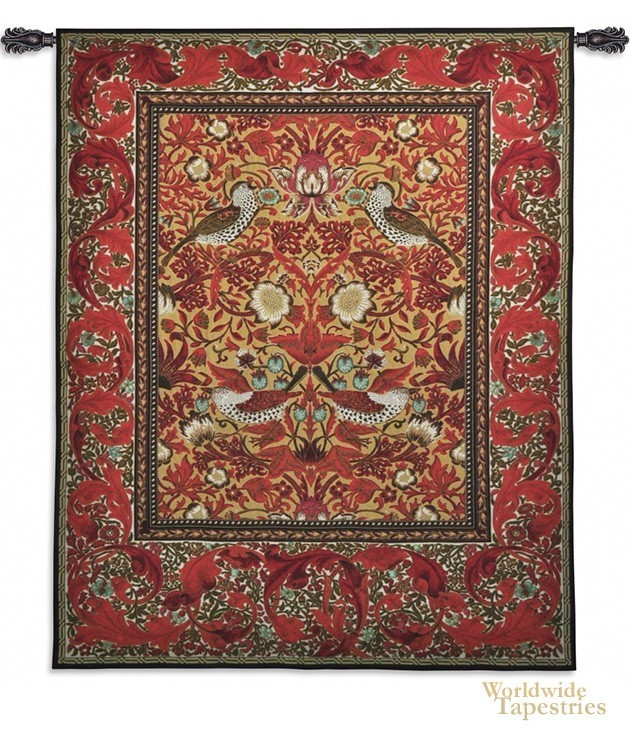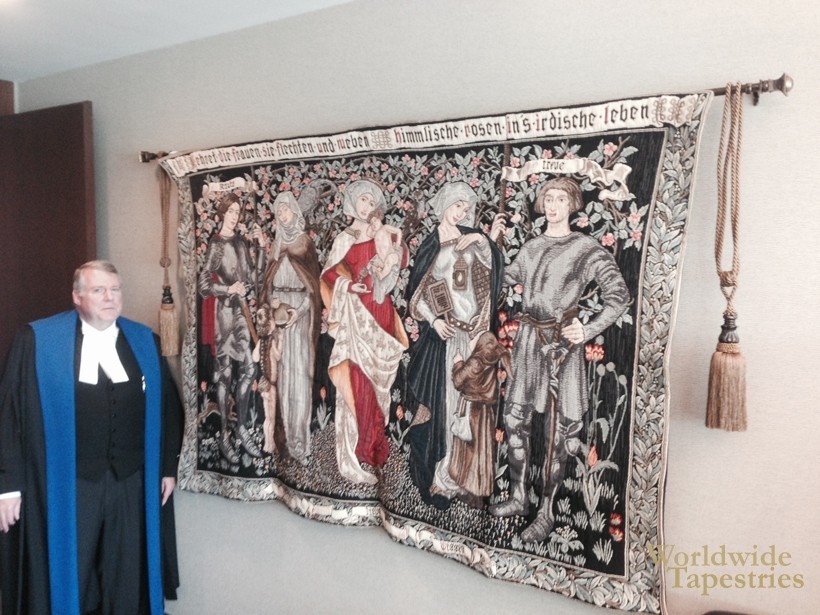Want to decorate with Victorian William Morris tapestries?
See these 5 ways on how to transform your home with these unique and distinctive wall decor for any room or home.
See all Victorian tapestries here based on designs by William Morris.
You can also read about decorating with William Morris tapestries in our previous post here.
The Victorian art era in Britain was between June 1837 to January 1901 during the time of the reign of Queen Victoria.
Victorian tapestry and art production at that time represented a golden age in art and textile in the industrial age. Before this time was the Georgian period of art, and after the Victorian era, was the Edwardian era of art.
Let’s have a look at theme number one:
1. Tree of Life tapestries from the Victorian William Morris era
One of the most popular works based on William Morris from this era is the Tree of Life.
Full of the celebration of nature and life, these woven art works show the sacred tree of life.
The Tree of Life is a theme that is found in many cultures and religions, from English to Celtic cultures:
For example in this Tree of Life Morris & Dearle here above, the designs and textures of these tapestries based on the original by Morris can be seen.
His compositions are finely balanced, and seem to evoke a flurry of movement within the design.
They are used to celebrate the life and power of nature into the room they are in.
It was through a time when industrialization threatened the arts, and the emergence of William Morris (1834 to 1896) changed the art production in this time. At the same time of textiles emerging, the beauty of architecture was emerging as well.
William Morris tapestries are considered the quintessential Victorian tapestry.
It was a powerful change in philosophy and values.
2. Scenes based on legends and stories
Morris also loved scenes from legends and stories.
For example, the Roman legend of Circe was about how the Italian King Picus was turned into a woodpecker by Circe.
Here we see Morris’ design showing this in a mythological scene filled with detail, and marvelous design:
See Victorian tapestry: William Morris Woodpecker tapestry here
The poem is depicted in the wall hanging as well, and the entire scene is filled with the flowing acanthus leaves full of intricate turns in its foliage.
These leaves are a favorite motif of Morris and Co.
Here’s another tapestry showing a similar celebration of the acanthus leaves, this time surrounding a Quince tree in summer.
See the European Summer Quince tapestry here based on the superb Victorian designs of woven textiles from the era:
As well as the use of natural motifs including the fantastic acanthus leaf, there is also the sense of movement in the piece with the elaborate designs with vines, flowers, leaves and natural elements as the perfect decoration rather than geometric designs.
There is a striving for a natural arrangement of subject matter that seems organic and natural yet is used sometimes symbolically, in that some elements are larger than expected and some smaller to create an uncertainty of realism, such as going back to the Summer Quince, we see the acanthus leaf larger than the tree:
See Victorian tapestry: Summer Quince tapestry here
So while the Georgian buildings had a period style that was timeless and elegant, the Victorian and Edwardian style was being developed as well.
The majority of decor was becoming more industrialized and the designs reflected the artists working to program the machines, rather than individually designed pieces.
This was seen as a ‘degradation’ in art standards by many, including William Morris.
The result was that Morris and Co with John Henry Dearle thought it was their “mission” to produce decorative furniture, wallpapers, tapestries and other fine art to revolutionse the art in the industrial revolution.
It was a “revolution within a revolution“.
The mainstyle in the Victorian age was elaborateness of design.
Bare walls were considered “uninteresting”, and the use of wallpaper increased.
In another legend or story, we see in The Holy Grail tapestry we see the legends of King Arthur with the knights preparing for departure.
Morris used these various legends as a basis of his woven works to tell the story or a scene of the story in his own unique style.
3. Scenes based on Religious stories and events
Morris and Co also produced luscious works based on religious or Christian events.
Some were large tapestry designs that were epic in composition and scale.
For example, The Adoration of the Magi tapestry showed a scene of the nativity filled with the elaborate detail so typical of Morris.
Here we see the garment folds and forest trees and rosebush foliage in the intricate design:
Morris’s works portrayed Biblical themes as well as themes from literature such as King Arthur, as sources of inspiration for his creations.
In the time of Morris and Co, their works were commissioned by private owners including the wealthy and entrepreneurial art lover, W.K. D’Arcy, commissioned the “The Round Table” tapestry for his dining room in Stanmore Hall.
Quirky Mr Morris has created a genre which is named after himself and forms at least a third or some would say more than half of the changes in art in the Victorian era.
4. Scenes inspired by daily life in the English countryside
Some works of Morris were not the epic or legendary events, and were rather from themes inspired by his life in the English countryside home.
One of these is the portrayal of floral and fauna from his gardens, such as thrushes and birds.
Here we see in William Morris Strawberry Thief Decor tapestry we see birds milling around strawberry bushes in a work filled with pattern and luscious color:
During this era, Gothic and Rococo styles of furniture were the most popular too, being influenced by place as well as time, as cultures were now becoming known outside of where they came from, as travel increased, such as in Asian and exotic influences on art.
In fact the Arts and Crafts movement of Morris, the Art Nouveau style and the Anglo-Japanese style all emerged form the Victorian age.
The “Art Nouveau” movement included the tapestry and art of Alphonse Mucha such as in his famous ‘Seasons’ where each season was represented by a woman.
The “Arts and Crafts” movement represented by William Morris saw the prolific design of tapestries which celebrated nature, mythology and Arthurian legends.
Each are distinctive are was a striving for a voice within this industrial age.
5. Inspired by literature
Some of Morris and Co’s works were inspired by literature.
Here we see in Ehret Die Frauen tapestry a design created by Pre-Raphaelite artist Marianne Stokes (1855-1927), woven by B. John Martin for Morris and Co at Merton Abbey.
The script reads: “Honor the women, thy wife and weave heavenly roses into earthly life”.
Meaning Honor the Women, we see Courage, Faith, Love, Wisdom & Fidelity from left to right.
The original is now at the Whitworth Art Gallery in Manchester England.
Here is a photo of the work hung on the wall with rod and tassels:
Filled once more with elaborate design and luscious detail, we see the garments and forest flowers and trees in all their glory.
Such an extravagant celebration of style, philosophy and meaning behind this wonderful tapestry.
As these tapestries are based on works from artists from England in the UK, you can see the tendency of the subject matter towards the legends of King Arthur, British flora and fauna, and mythology influenced by Europe including Roman mythology.
There’s a charm, elegance and pure allure to English art that is unique, such as its references to strawberry bushes and quince trees and more.
Today, the works from Morris and Co from this Victorian era are a unique genre that has people fascinated.
It’s distinctive, unique and yet because it is intricately related to nature, is beautiful, in the “Morris way”, that only Morris and Co based works can achieve.
So if you want distinctive decor with such intricate of design and composition, see our William Morris tapestries here.
